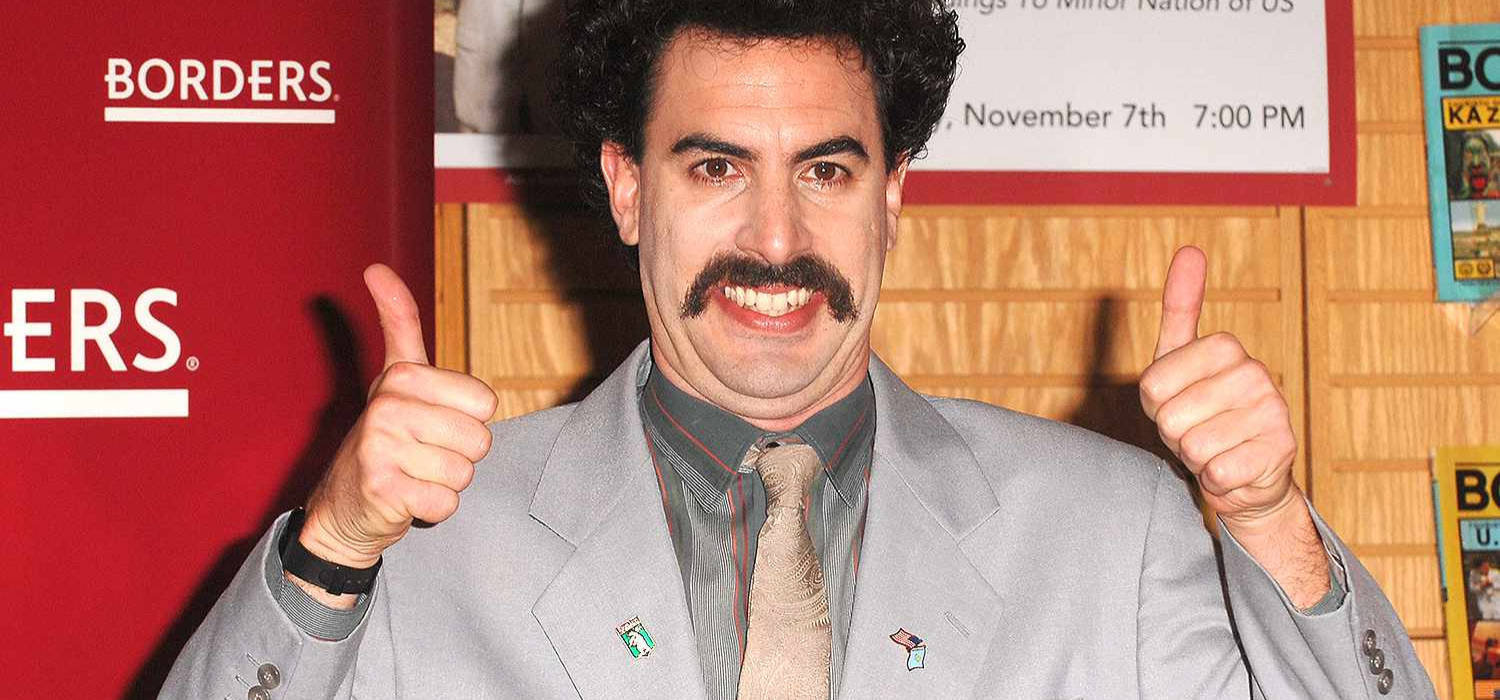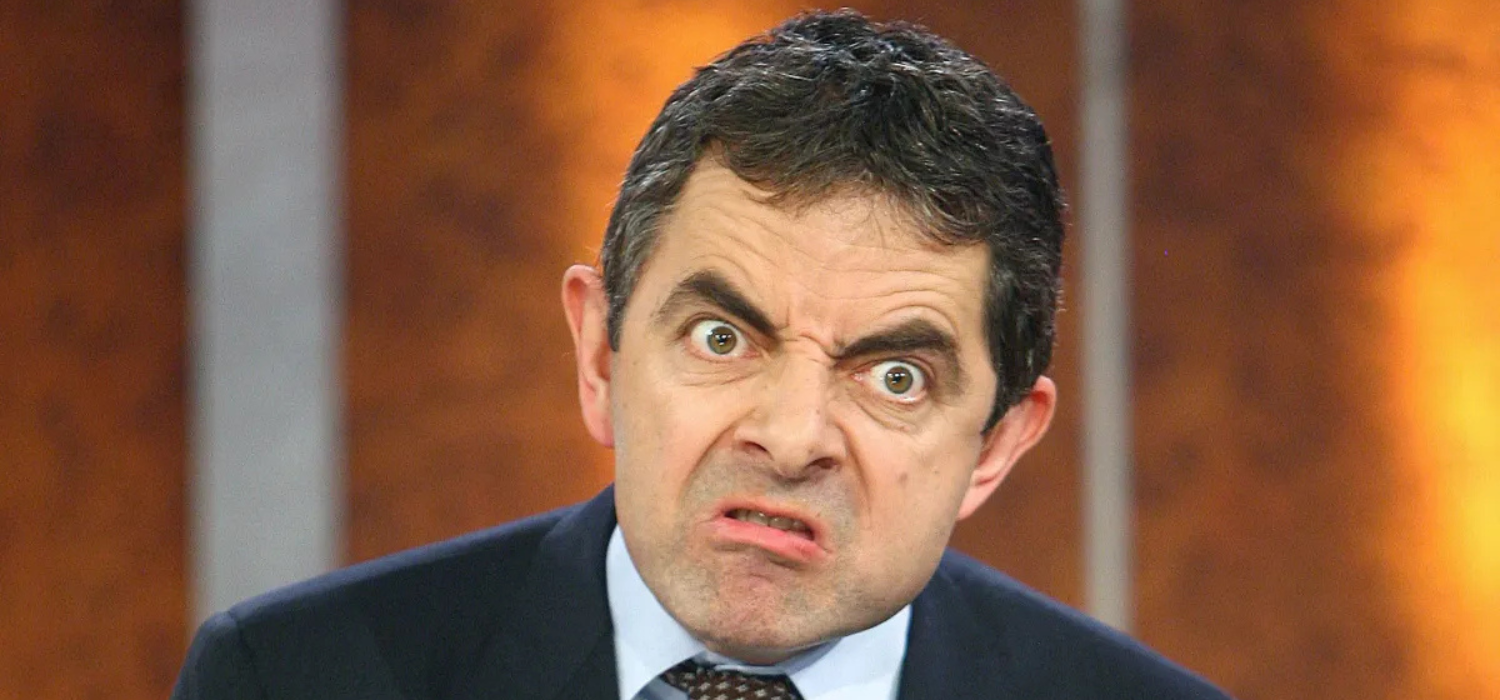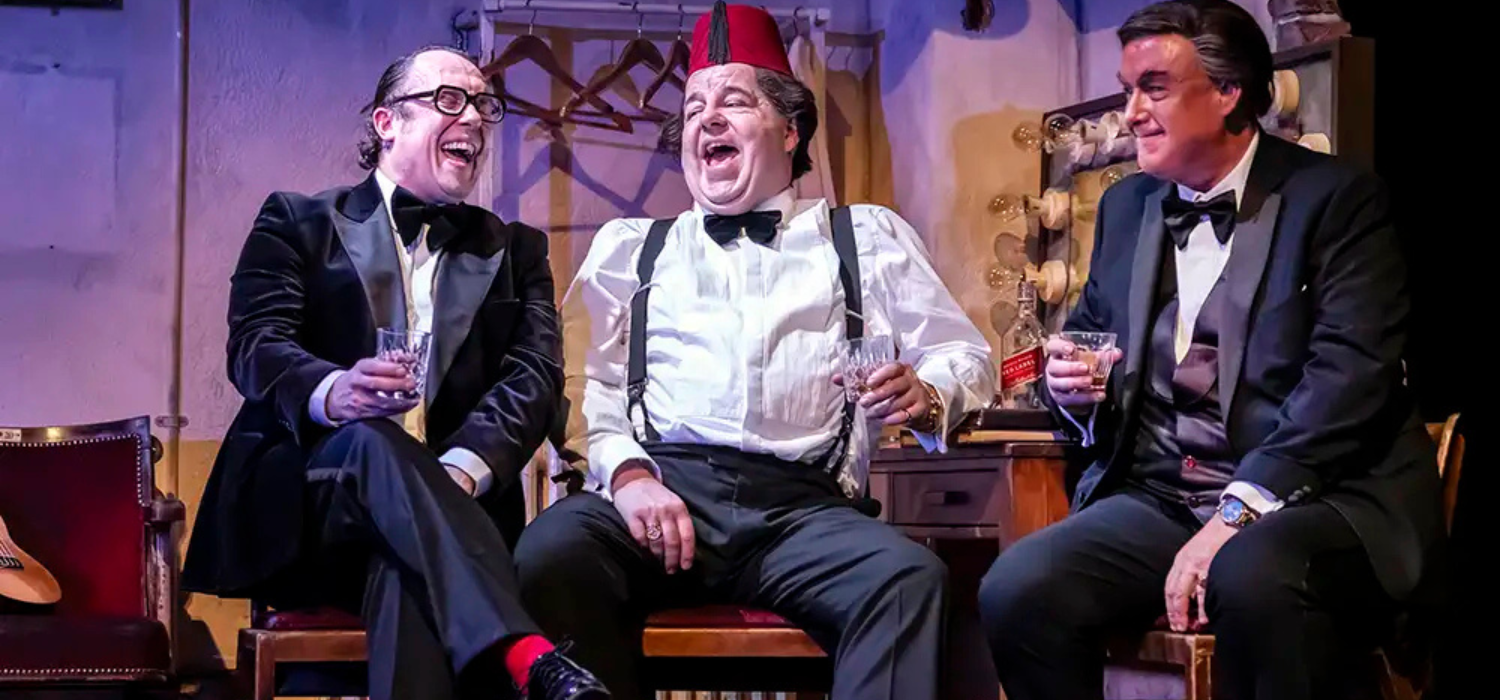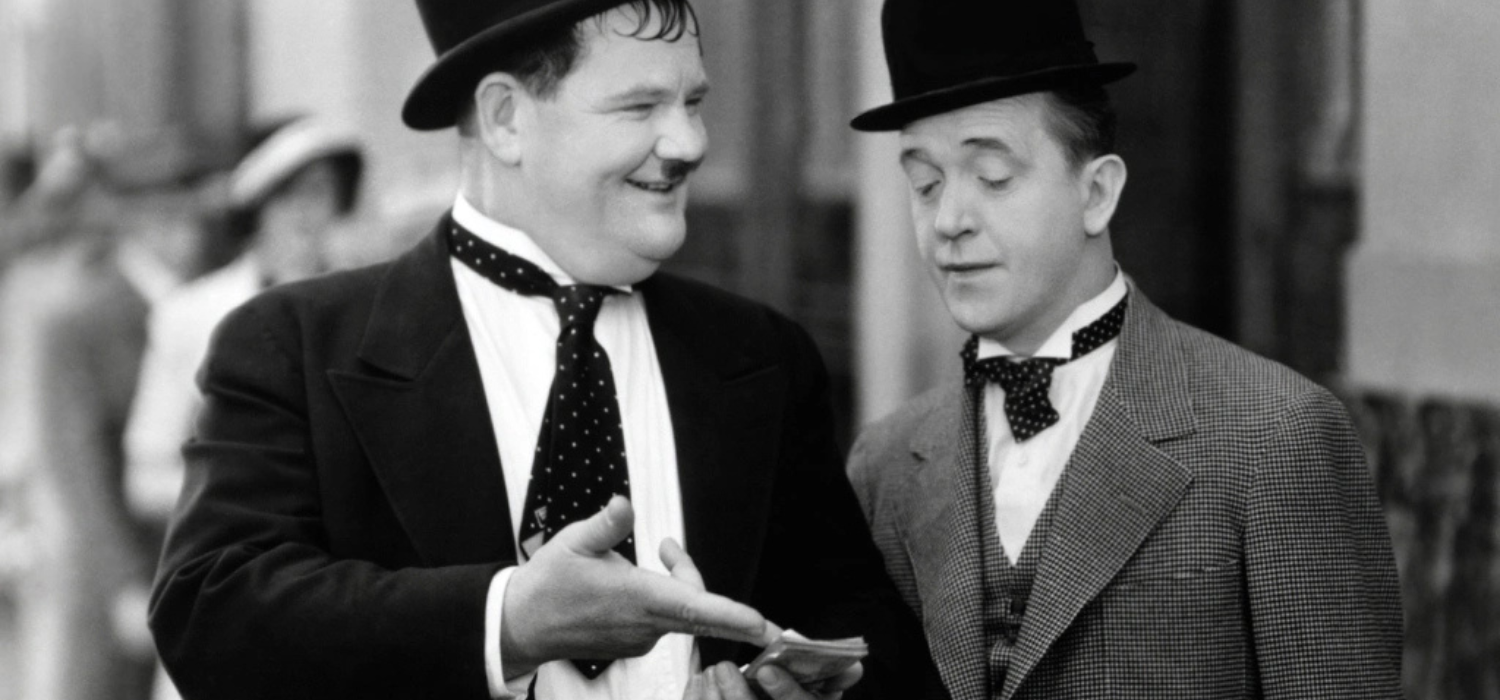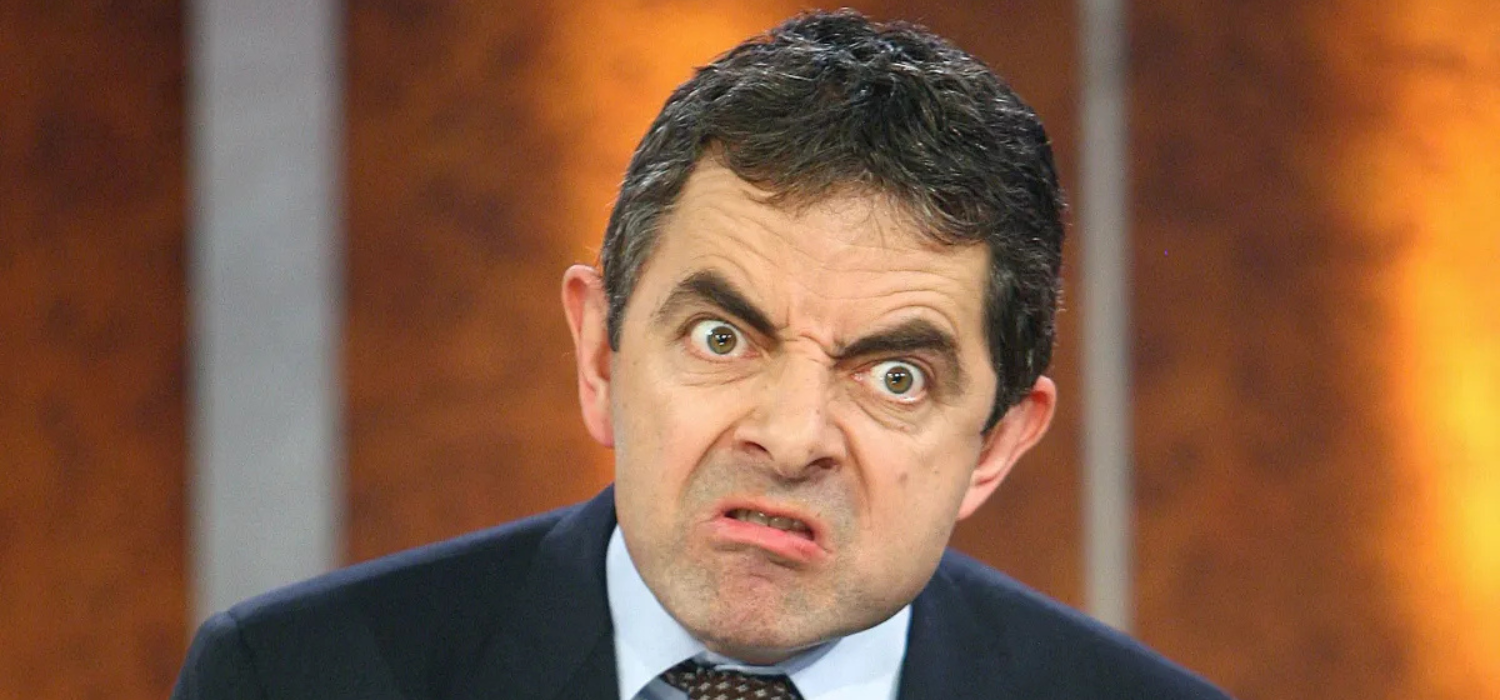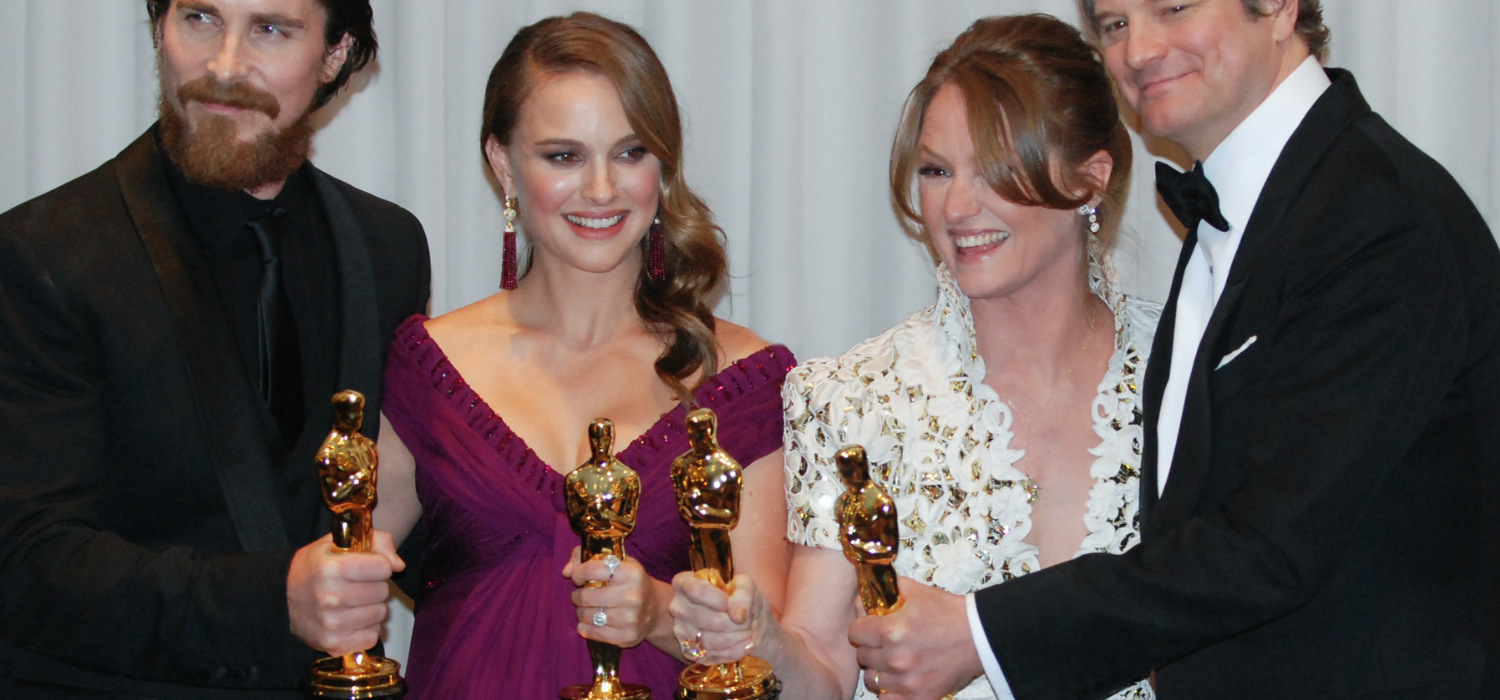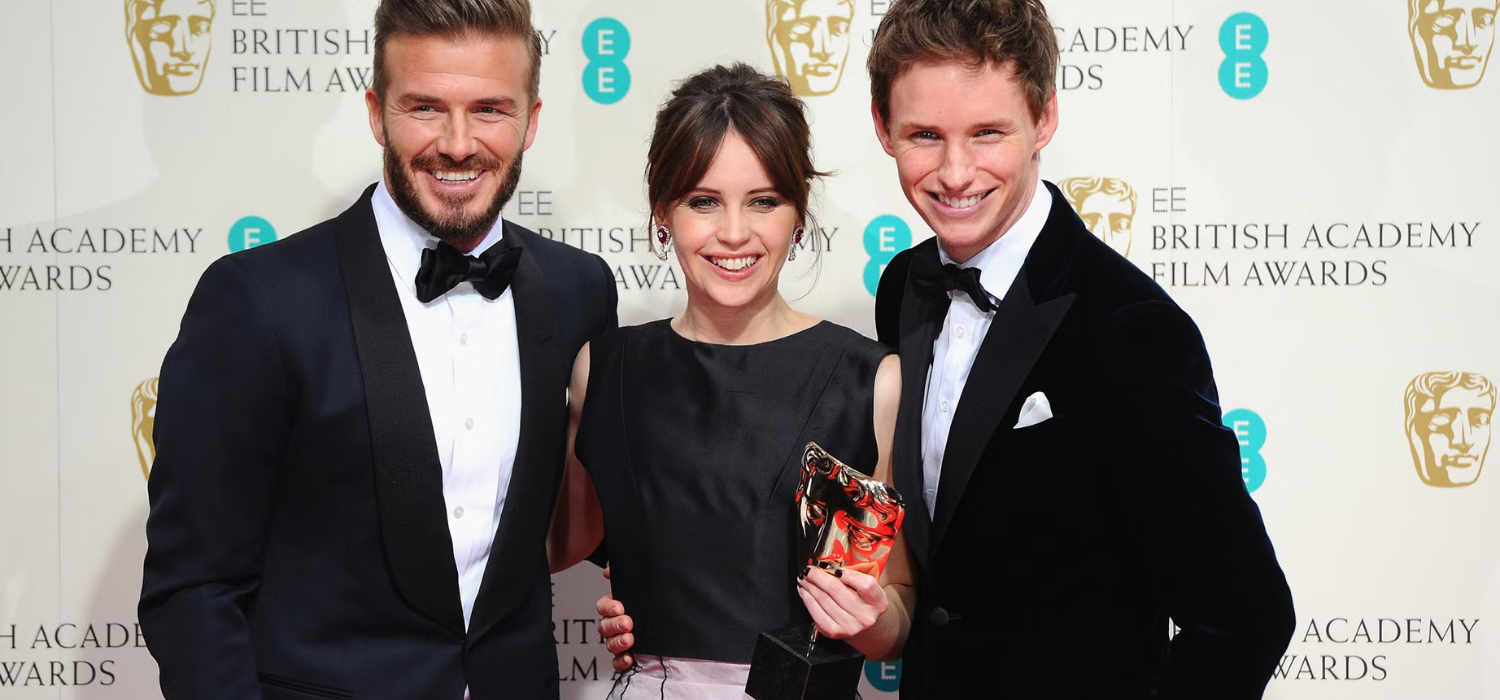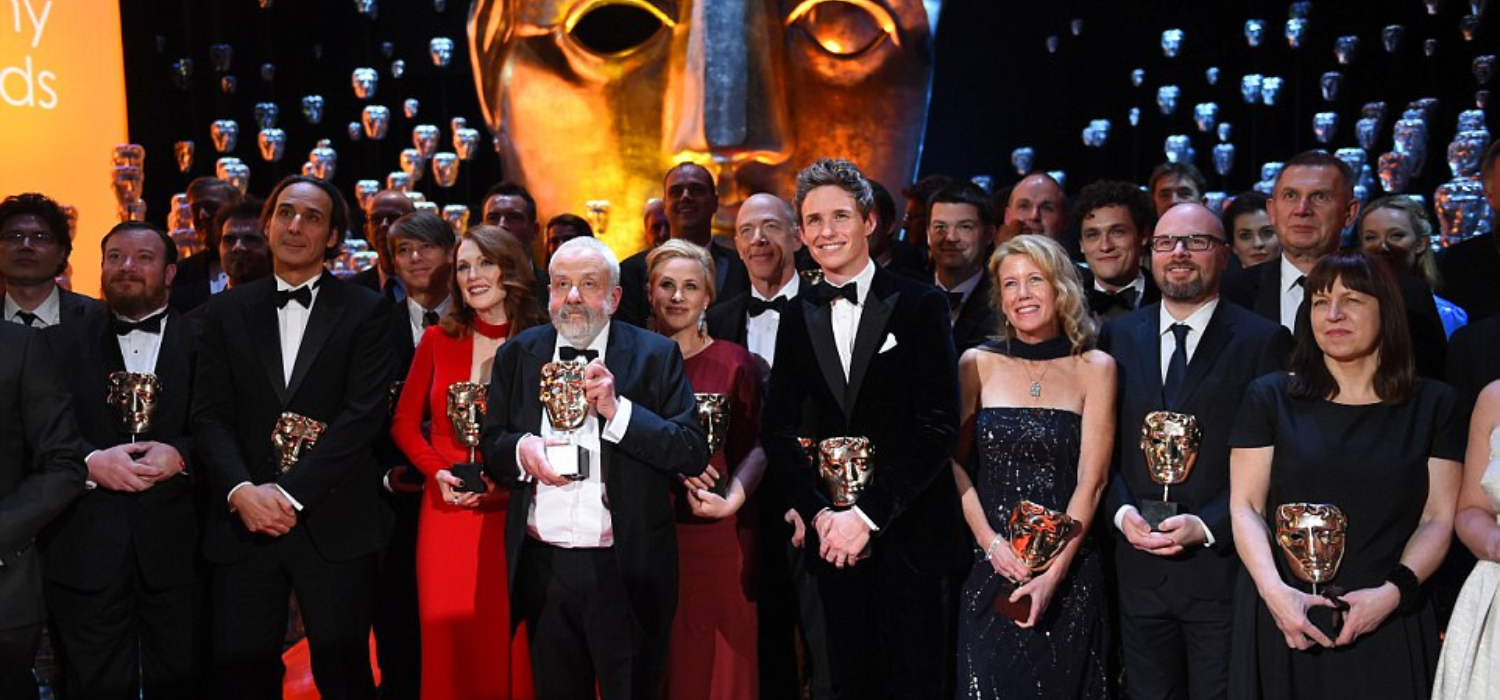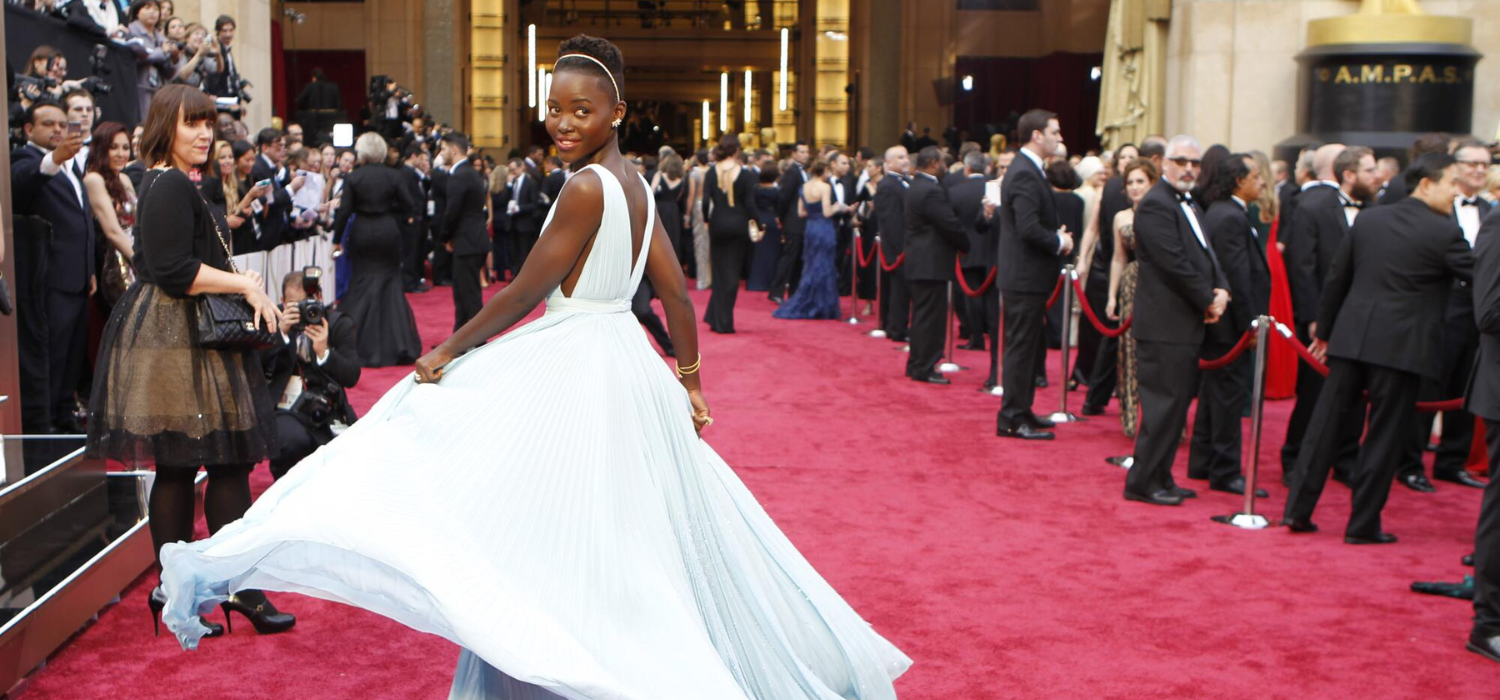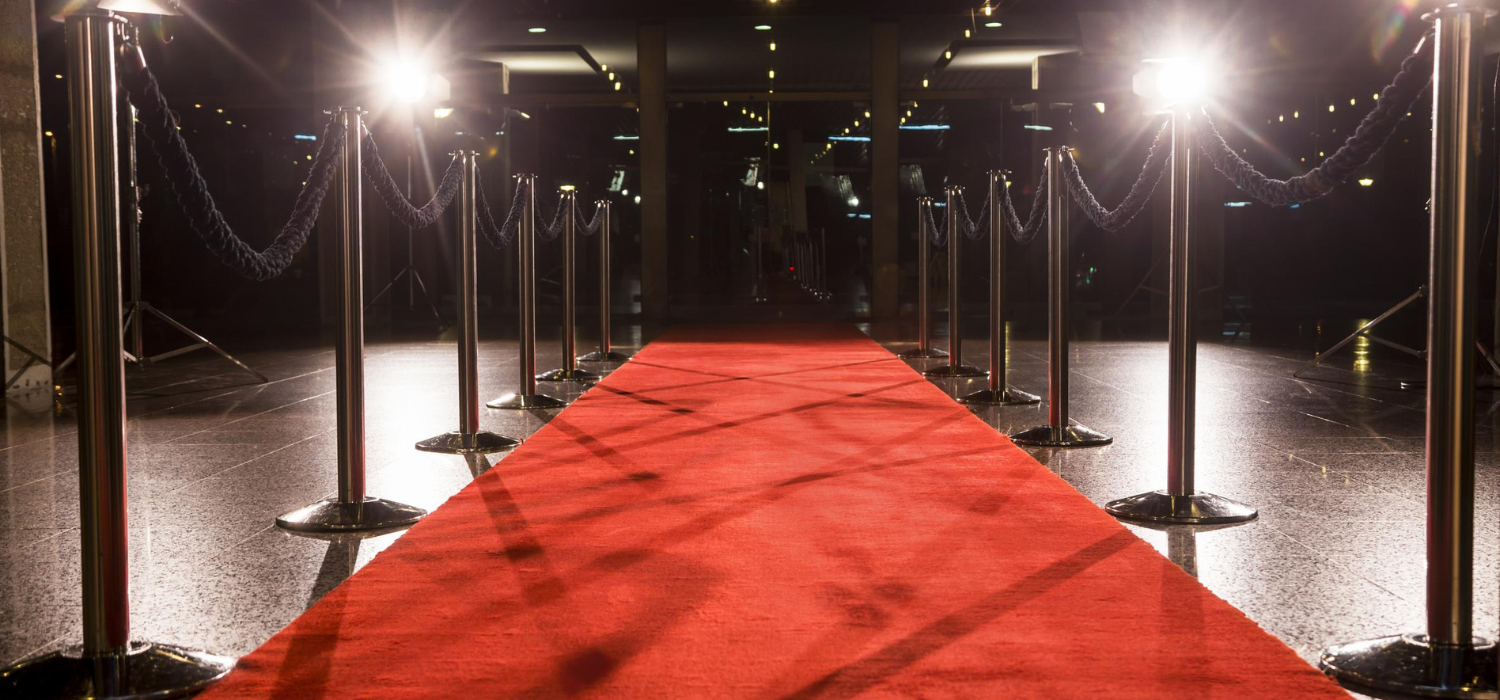The Birth of a Comedy Revolution: Monty Python’s Legacy When talking about British comedy, one name immediately rises above the rest—Monty Python. Formed in 1969, the group was made up of John Cleese, Michael Palin, Eric Idle, Terry Jones, Graham Chapman, and Terry Gilliam. Together, they changed the way the world thought about comedy. Their TV series Monty Python’s Flying Circus was unlike anything audiences had seen before. It wasn’t just sketch comedy—it was surreal, unpredictable, and gleefully absurd. What made Monty Python revolutionary was the refusal to stick to a traditional punchline structure. A sketch about a dead parrot didn’t end with a neat joke; instead, it spiraled into hilarity through repetition, exaggeration, and sheer madness. Their Ministry of Silly Walks sketch wasn’t just funny—it became iconic, symbolizing the group’s ability to turn the mundane into the absurd. Their influence spread globally. Comedy in America, Europe, and even Asia took cues from their experimental format. Shows like Saturday Night Live and The Simpsons bear traces of Monty Python’s genius. More than 50 years later, their work still feels fresh. And their films—Monty Python and the Holy Grail, Life of Brian, and The Meaning of Life—are considered comedic masterpieces. The group didn’t just make people laugh; they created a movement that shaped modern comedy. John Cleese: From Python to Fawlty Towers Among the Python team, John Cleese became a towering figure in his own right. After Monty Python, Cleese co-created Fawlty Towers, which is often hailed as one of the greatest sitcoms in television history. With only 12 episodes produced, it remains a masterpiece of comedic writing and performance. Cleese’s character, Basil Fawlty, is a hotel manager constantly overwhelmed by incompetent staff, demanding guests, and his own explosive temper. His physical comedy, sharp dialogue, and exasperated expressions made Basil one of television’s most memorable characters. What makes Fawlty Towers timeless is its mix of slapstick humor and biting satire, with Cleese balancing chaos and control in every episode. Cleese’s career extended far beyond British television. His performance in A Fish Called Wanda and contributions to films like Harry Potter and the Philosopher’s Stone showcased his ability to cross into global mainstream entertainment. More importantly, Cleese carried the Python spirit forward—proving that absurdity and sharp wit could coexist in mainstream comedy. Rowan Atkinson: The Silent Genius While Monty Python introduced the world to absurdist humor, Rowan Atkinson brought back the art of physical comedy. Best known as Mr. Bean, Atkinson became a global star by saying almost nothing. With rubbery facial expressions, bumbling antics, and exaggerated body language, he created a character that transcended language barriers. Mr. Bean didn’t just entertain British audiences—it became a worldwide phenomenon, spawning films, animated adaptations, and international acclaim. But Atkinson’s genius didn’t stop with Bean. He also starred in Blackadder, one of Britain’s sharpest and wittiest historical comedies. Each season took place in a different historical era, with Atkinson’s character shifting slightly in personality, but always retaining his signature dry wit and sarcasm. Supported by talents like Hugh Laurie, Stephen Fry, and Tony Robinson, Blackadder showed Atkinson’s range beyond slapstick. The duality of Atkinson’s career—silent, universal comedy with Mr. Bean and clever, dialogue-driven humor with Blackadder—cements him as one of the greatest comedians to come out of the UK. He proved that laughter can be sparked in many ways: sometimes through clever words, and sometimes with no words at all. The Rise of Alternative Comedy in the 1980s By the 1980s, comedy in the UK began to evolve once again. Audiences wanted something edgier, sharper, and more politically aware. This gave rise to what was known as “alternative comedy.” Unlike the traditional stand-up and sitcoms of earlier decades, alternative comedy challenged authority, mocked politics, and pushed the boundaries of what was acceptable. One of the defining shows of this era was The Young Ones, featuring Rik Mayall, Adrian Edmondson, Nigel Planer, and Alexei Sayle. The show was chaotic, loud, and anarchic. It broke away from the polished sitcom style, embracing randomness, slapstick, and heavy doses of satire. It was messy—but that was the point. It reflected the rebellious spirit of the times. Rik Mayall, in particular, became a standout figure of the alternative comedy movement. His manic energy, exaggerated performances, and outrageous characters made him unforgettable. Whether in The Young Ones, Bottom, or his partnership with Adrian Edmondson, Mayall redefined what a comedic performer could be. He wasn’t about subtlety—he was about pure, explosive energy. This new wave of comedy paved the way for future generations. It showed that comedy didn’t have to follow rules—it could be chaotic, political, and bold. French and Saunders: Sketch Comedy Royalty As alternative comedy was reshaping the landscape, two women were carving out their place in comedy history—Dawn French and Jennifer Saunders. Their show, French and Saunders, became legendary for its parodies, sharp wit, and playful chemistry. Together, they poked fun at pop culture, blockbuster films, and celebrity culture, but always with a sense of charm and fun. What made them stand out was their ability to parody without cruelty. Their sketches were hilarious, but they also celebrated the very things they were mocking. Separately, both found success as well. Dawn French starred in The Vicar of Dibley, a heartwarming sitcom where her comedic timing and warmth made the show a household favorite. Jennifer Saunders created Absolutely Fabulous (Ab Fab), which became a cultural phenomenon in the 1990s. Ab Fab’s over-the-top characters, wild storylines, and biting satire of fashion and media culture gave Saunders a permanent place in comedy history. Billy Connolly: The Big Yin of Comedy Scotland’s greatest comedic export, Sir Billy Connolly, is nothing short of legendary. Known affectionately as “The Big Yin,” Connolly brought a storytelling style to stand-up that was both deeply personal and universally relatable. With his Glaswegian accent, booming voice, and natural warmth, he could hold an audience in the palm of his hand for hours. What made Connolly unique was his ability to weave humor into stories from everyday life—whether about
Comedy Royalty: United Kingdom’s Legendary Comedians
Introduction: The Kingdom of Laughter The United Kingdom has long been celebrated for its rich cultural contributions—from literature and theater to music and fashion. Among these treasures, one of the most enduring legacies is comedy. For more than a century, British comedians have shaped humor not only at home but across the globe, inspiring audiences and entertainers alike. The landscape of UK comedy is as diverse as it is influential: slapstick, satire, stand-up, sketch shows, sitcoms, and surrealism all form part of this grand tradition. The idea of “comedy royalty” reflects the cultural reverence for these performers who, like monarchs of laughter, have ruled stages, screens, and hearts. This journey begins with early pioneers and continues through generations of iconic figures who each added their unique flavor to Britain’s comedy empire. The Birth of a Comic Tradition: Music Halls and Vaudeville Before the age of television, British comedy thrived in music halls during the late 19th and early 20th centuries. These venues were the foundation of popular entertainment, showcasing variety acts, including comedians who specialized in physical humor, witty wordplay, and sharp satire. Performers like George Formby Sr., Marie Lloyd, and later Max Miller became household names. Miller, often called “The Cheeky Chappie”, became one of the first major comedy stars to gain national fame, with his daring humor and flamboyant stage persona. Music halls set the stage for comedy as a profession, allowing comedians to transition into radio, film, and eventually television. This period also saw the development of the double act tradition, a hallmark of UK comedy. Partnerships of contrasting characters—such as the “straight man” and the “funny man”—would go on to dominate British humor for decades. Chaplin’s genius lay in combining slapstick with deep human emotion. Films like The Kid (1921), City Lights (1931), and Modern Times (1936) made audiences laugh while also highlighting social issues such as poverty and industrial hardship. Unlike many silent comedians, Chaplin transcended simple gags—he created stories that blended humor with pathos. Even after moving to Hollywood, Chaplin carried his British comedic roots with him, introducing the world to a distinctly English blend of cleverness and heart. His legacy as one of the greatest comedians of all time remains untouched, and he is rightly considered the first true king of comedy. Stan Laurel: Half of the World’s Beloved Duo Another British comedian who achieved global fame in Hollywood was Stan Laurel, one half of the legendary duo Laurel and Hardy. Born in Lancashire, Laurel brought a uniquely British sense of physical comedy and timing to his work with American partner Oliver Hardy. Together, they defined the double act formula that would inspire countless others: the bumbling, innocent fool (Laurel) paired with the pompous straight man (Hardy). Their films, such as Sons of the Desert (1933), continue to entertain new generations. Laurel’s influence on British comedy is profound—his style of wide-eyed innocence, physical pratfalls, and emotional sincerity can be seen in comedians from Norman Wisdom to Rowan Atkinson. He remains a cornerstone of comedy royalty, showing how British humor could resonate universally. The Goon Show: Surrealism Before Its Time In the 1950s, radio was the dominant medium for comedy, and nothing shook the airwaves quite like The Goon Show. Created by Spike Milligan, with co-stars Peter Sellers and Harry Secombe, the program introduced surreal, absurdist humor that was decades ahead of its time. The Goons created bizarre characters, nonsensical plots, and groundbreaking sound effects that left audiences in stitches. Milligan’s manic creativity and Sellers’ incredible range of voices set new standards for comedy performance. More importantly, The Goon Show laid the groundwork for later innovators like Monty Python. The anarchic spirit of the Goons made it clear that comedy could be as experimental and unpredictable as any art form. Peter Sellers: The Master of Transformation Among the Goons, Peter Sellers emerged as a true chameleon. His ability to inhabit characters was unmatched, and he soon became a global film star. Sellers brought brilliance to roles such as the bumbling Inspector Clouseau in The Pink Panther series, where his slapstick and verbal humor combined to create unforgettable comedy. Sellers was not just a clown; he was a skilled satirist. In Dr. Strangelove (1964), he played three different roles, delivering biting political satire in a Cold War-era masterpiece. His versatility cemented him as one of the greatest comedic actors in cinema history. His career demonstrated that British comedy royalty could reign not only on stage and television but also in the most prestigious corners of international film. The Carry On Films: Comedy for the Masses No discussion of British comedy would be complete without the Carry On films, a series of bawdy, slapstick comedies that began in 1958 and spanned over 30 films. Featuring stars like Sid James, Kenneth Williams, and Hattie Jacques, these films embraced innuendo, farce, and playful parody of British life and institutions. While critics were divided, the Carry On films were hugely popular with audiences, capturing the cheeky, working-class humor that resonated in post-war Britain. Williams’ sharp delivery and camp style, in particular, made him a standout figure in UK comedy history. Though often considered low-brow, the series’ influence is undeniable—it popularized catchphrases, established enduring comedic archetypes, and reflected Britain’s ability to laugh at itself. Tony Hancock: The Everyday Man of Comedy In the 1950s and 60s, Tony Hancock became a defining figure of British sitcom comedy. His radio and television series, Hancock’s Half Hour, established the template for modern sitcoms. Hancock’s character—the pompous, unlucky, and often melancholy “Anthony Aloysius St John Hancock”—was a departure from broad slapstick. Instead, Hancock focused on character-driven humor and the struggles of the ordinary man. Episodes like “The Blood Donor” and “The Radio Ham” are still celebrated as classics. Hancock’s comedy had a bittersweet edge, and his influence can be seen in later sitcoms such as Steptoe and Son and Fawlty Towers. He proved that comedy could reflect the frustrations of everyday life while still delivering laughs. Norman Wisdom: The Clumsy Underdog Another post-war
The Legacy of Laughter: Celebrating UK Comedy Icons
Introduction: Why British Comedy Matters Comedy has always been more than just entertainment. It is a reflection of culture, society, and the human condition. In the United Kingdom, comedy has long been regarded as one of the country’s greatest cultural exports. From witty satire and slapstick to sharp stand-up and surreal sketches, British comedy has consistently influenced global humor. What sets it apart is its ability to blend intelligence with silliness, social critique with entertainment, and timeless characters with unforgettable punchlines. While Hollywood might be known for glitz and glamour, the UK is often credited as the birthplace of comedy styles that reshaped television, film, and live performance. Names like Charlie Chaplin, Peter Sellers, Rowan Atkinson, and Monty Python have not only defined eras of humor but also crossed borders, proving that laughter is a universal language. The legacy of UK comedy icons is not simply about jokes; it is about shaping culture, offering relief in difficult times, and leaving behind characters that generations will continue to adore. Charlie Chaplin: Silent Comedy’s Global King When discussing comedy icons, the journey must begin with Charlie Chaplin—the boy from London’s tough Southwark district who went on to become one of the most recognizable faces in cinema history. Chaplin’s character, The Tramp, with his bowler hat, cane, and distinctive walk, remains one of the most enduring figures in comedy. What made Chaplin revolutionary was his ability to tell stories that were both hilarious and deeply human without uttering a single word. His silent films such as The Kid (1921), City Lights (1931), and Modern Times (1936) combined slapstick with poignant social commentary. Chaplin’s comedy was not just about pratfalls and funny faces—it was about showing the struggles of ordinary people in a rapidly industrializing world. His genius lay in making audiences laugh one moment and tear up the next. Even today, nearly a century later, Chaplin’s work continues to resonate across cultures, reminding us that humor can transcend language and time. Chaplin’s journey from London stages to global stardom laid the groundwork for the idea that British humor could conquer the world. Peter Sellers and the Art of Character Comedy Fast forward to the mid-20th century, and another British comedy icon emerged: Peter Sellers. Known for his remarkable ability to disappear into characters, Sellers brought to life some of the most eccentric and beloved roles in film history. What set Sellers apart was his versatility. He could move from slapstick to dark satire effortlessly, making him one of the most respected comedians of his era. Unlike Chaplin, who was primarily rooted in silent comedy, Sellers thrived in the era of sound, accents, and dialogue-driven humor. Sellers’s influence can be seen in countless comedians who followed, especially those who embrace character-based humor and satire. His ability to embody larger-than-life personalities while maintaining comic timing proved that British comedy had an endless capacity for reinvention. The Rise of Monty Python and Surreal Humor If Chaplin gave the world silent laughter and Sellers showed the brilliance of character work, Monty Python redefined comedy entirely. Emerging in the late 1960s, the comedy group—consisting of John Cleese, Eric Idle, Michael Palin, Graham Chapman, Terry Jones, and Terry Gilliam—introduced a new brand of humor: absurd, surreal, and unapologetically bizarre. Their television show, Monty Python’s Flying Circus, broke all the rules. Sketches didn’t always have punchlines; they often ended abruptly or transitioned into animated sequences by Terry Gilliam. The troupe thrived on randomness, intellectual satire, and poking fun at British traditions, politics, and class systems. Films like Monty Python and the Holy Grail (1975), Life of Brian (1979), and The Meaning of Life (1983) became cult classics. Their humor was not just funny but also daring—often controversial yet deeply influential. What Monty Python achieved was more than just laughter; they created a movement. Their work influenced American shows like Saturday Night Live and inspired countless comedians around the globe. Surreal humor, absurdism, and meta-comedy became mainstream because of Monty Python’s groundbreaking approach. The Foundation of a Comedy Legacy By the time Monty Python had cemented its place in pop culture, British comedy had already evolved from silent films to character-driven narratives to surrealism. Each era produced icons whose work transcended national borders and spoke directly to the human experience. Together, these legends laid the foundation for future generations of British comedians and actors who would go on to redefine global humor. Rowan Atkinson: The Silent Genius of Modern Comedy Few comedians have managed to capture global audiences with so little dialogue as Rowan Atkinson. Born in County Durham, Atkinson became an international sensation thanks to his iconic creation, Mr. Bean. What made Mr. Bean extraordinary was its universal appeal. Atkinson relied on exaggerated facial expressions, physical mishaps, and childlike mischief rather than words. The character could be understood in London, Tokyo, or New York without translation. Television episodes of Mr. Bean became instant classics, and the two feature films (Bean in 1997 and Mr. Bean’s Holiday in 2007) grossed hundreds of millions worldwide. But Atkinson’s comedy genius extended beyond Mr. Bean. His performances in Blackadder, a historical sitcom spanning multiple eras, displayed sharp wit, biting sarcasm, and clever wordplay. In contrast to the silent slapstick of Mr. Bean, Blackadder relied on cutting dialogue and satirical takes on history. This duality—between physical comedy and intellectual humor—proved Atkinson’s versatility and secured his place among the greatest comedy icons. John Cleese: The Master of Satire and Absurdity Although Monty Python was a group effort, one of its most recognizable figures was John Cleese. His tall frame, stern expressions, and impeccable timing made him a natural for sketch comedy, but Cleese’s career extended well beyond the troupe. His sitcom, Fawlty Towers, co-written with his then-wife Connie Booth, is often considered one of the greatest British sitcoms of all time. Cleese’s portrayal of Basil Fawlty, the rude, incompetent, and endlessly frustrated hotel manager, became legendary. The series only ran for 12 episodes across two seasons, yet it left a permanent mark on television comedy.
Comedy That Conquered the World: UK Legends of Humor
Introduction: The Global Power of British Humor Comedy is often described as a universal language. While cultures may differ in traditions, tastes, and ways of life, the ability to laugh unites people everywhere. Among the world’s comedy capitals, the United Kingdom holds a truly special place. For centuries, UK humor has shaped global entertainment, moving seamlessly from Shakespeare’s witty plays to timeless sitcoms, groundbreaking sketches, and iconic stand-up performances. What makes British comedy so distinct is its clever wordplay, subtle irony, and ability to tackle even the most awkward of topics with a sharp edge. From the stages of London’s theaters to the screens of Hollywood, British comedians and actors have carried laughter across borders, making their craft a cultural export just as important as music, literature, and cinema. The Roots of British Comedy: A Historical Look Before modern sitcoms and viral sketches, British humor was born in theater. The works of William Shakespeare, though often dramatic, carried some of the earliest examples of structured comedy that still influence writers today. His plays such as A Midsummer Night’s Dream and Much Ado About Nothing relied on misunderstandings, disguises, and witty banter—elements that would later become hallmarks of British sitcoms. The Elizabethan era was also home to slapstick performers and comedic interludes that entertained common audiences, blending physical humor with clever language. By the 18th and 19th centuries, comedy halls and pantomimes became popular across the UK. These performances were accessible to the working class and relied heavily on exaggerated expressions, innuendos, and social satire. This was also when the tradition of British self-deprecation emerged—jokes that poked fun at one’s own misfortunes, appearance, or awkwardness, a style that still resonates strongly with audiences today. Comedy as Social Commentary One of the defining features of British humor is its ability to reflect and critique society. Even in early times, plays and performances often disguised biting criticism under layers of jokes. The rise of satire in the 18th century gave birth to works by writers like Jonathan Swift, whose biting humor in Gulliver’s Travels mocked politics, religion, and human nature. This spirit of satire would later be seen in television classics such as Yes Minister and The Thick of It, as well as stand-up routines that challenge authority through laughter. The Golden Age of British Radio Comedy Before television dominated homes, the UK experienced a golden age of radio comedy during the early to mid-20th century. Shows like It’s That Man Again (ITMA) brought lighthearted relief to wartime Britain, proving how humor could provide comfort even during dark times. These early programs introduced catchphrases and comic archetypes that people would later see evolve into sitcoms. Radio also gave rise to The Goon Show, starring Peter Sellers, Spike Milligan, and Harry Secombe, a program that shaped absurdist humor and inspired future comedy giants like Monty Python. The Goons, with their surreal sketches, wild sound effects, and ridiculous characters, laid the foundation for modern sketch comedy. Their influence stretched far beyond the UK, with comedians across the world adopting their nonsensical yet brilliant approach to humor. Monty Python: Redefining Comedy Forever When discussing UK legends of humor, it’s impossible to overlook Monty Python’s Flying Circus. Premiering in 1969, this sketch comedy troupe—made up of John Cleese, Eric Idle, Michael Palin, Terry Jones, Terry Gilliam, and Graham Chapman—completely reinvented comedy. They abandoned traditional punchlines and embraced a style that was surreal, unpredictable, and often absurdly intellectual. Sketches like “The Dead Parrot,” “The Ministry of Silly Walks,” and “Spam” became instant classics, embedding themselves in popular culture worldwide. Monty Python didn’t just entertain; they revolutionized how audiences understood comedy. Their influence spread across the Atlantic, inspiring American comedians and TV shows such as Saturday Night Live and The Simpsons. They also ventured into film, with works like Monty Python and the Holy Grail and Life of Brian becoming cult classics. To this day, Monty Python represents the height of British comedy’s global impact. Charlie Chaplin: The Silent Comedy Icon While Monty Python dominated the television era, another British legend had already conquered the world decades earlier—Charlie Chaplin. Born in London in 1889, Chaplin rose from a childhood of poverty to become one of the most recognizable entertainers in history. His character, The Tramp, became a universal symbol of humor, resilience, and humanity. Through silent films like The Kid (1921), City Lights (1931), and Modern Times (1936), Chaplin combined slapstick with heartfelt storytelling, creating timeless works that still move audiences today. Chaplin’s genius lay in his ability to communicate without words. With just his expressions, gestures, and comedic timing, he managed to captivate audiences across different cultures and languages. Even though his films were silent, they spoke volumes about social issues, poverty, and the struggles of ordinary people. In many ways, Chaplin was the original comedian whose work transcended borders, proving that British humor could become a global phenomenon. Peter Sellers: The Master of Disguise Another icon who shaped comedy both in the UK and internationally was Peter Sellers. Known for his chameleon-like ability to transform into wildly different characters, Sellers was the genius behind Inspector Clouseau in The Pink Panther series. His clumsy detective, with a thick French accent and impeccable slapstick timing, became one of cinema’s most beloved comic creations. Sellers also showcased his versatility in films like Dr. Strangelove, where he played multiple roles, each more absurd than the last. Sellers’ brilliance lay in his unpredictability. Audiences never knew what he would do next, and that spontaneity kept his comedy fresh and unforgettable. His career was a testament to how British comedic talent could seamlessly move into Hollywood and conquer global cinema. Early Television Comedy: Setting the Stage The introduction of television brought comedy into homes across Britain. Shows like Hancock’s Half Hour starring Tony Hancock set the tone for sitcoms with relatable characters, witty scripts, and situational humor. Hancock’s portrayal of the “everyman” struggling through life’s challenges resonated deeply with audiences. This sitcom style, focusing on ordinary people in everyday situations, would later
From London Stages to Global Fame: UK’s Funniest Stars
Introduction: Why British Comedy Rules the World There’s something unmistakably special about British comedy. It has a rhythm, a wit, and a sharpness that’s unlike anything else. From the quick sarcasm of stage performers to the slapstick brilliance that has crossed oceans, the United Kingdom has produced some of the funniest actors and comedians in history. For generations, audiences have turned to British humor not just for entertainment but also for a sense of cleverness—comedy that makes you laugh and think at the same time. The story of UK’s funniest stars isn’t just about jokes; it’s about culture, tradition, and a journey from the intimate stages of London theatres to the global spotlight. London’s Theatre Roots: The Birthplace of Humor Comedy in the United Kingdom has always had deep ties to theatre. London, with its legendary West End, became a hub for performance long before television and cinema took over. In those early days, comedy was about timing, facial expressions, and live interaction with the audience. Performers crafted humor that reflected society—politics, everyday struggles, and the quirks of British life. This theatrical foundation shaped some of the greatest talents who later went on to become household names around the world. The stage wasn’t just a platform; it was a testing ground where comedians honed their craft, learning what could make a crowd roar with laughter. Charlie Chaplin: The Silent Comedy Pioneer No conversation about British comedy can begin without mentioning Charlie Chaplin. Though he found fame in Hollywood, Chaplin was a Londoner at heart. Born into poverty, he began performing at music halls before creating his iconic character, “The Tramp.” What made Chaplin stand out was his ability to combine slapstick with raw emotion. Even without words, his facial expressions and physical comedy told stories that resonated globally. Chaplin’s journey from London stages to Hollywood superstardom laid the groundwork for how British comedians could conquer the world. His influence is still visible today—every physical gag, every exaggerated stumble, owes a little something to Chaplin. Peter Sellers: The Master of Transformation If Chaplin proved that physical comedy could touch hearts, Peter Sellers showed that versatility could make audiences laugh endlessly. Known for The Pink Panther series, Sellers could slip into multiple roles with ease, each one hilarious and unique. His sharp improvisation skills and fearless approach to characters made him a legend. What’s remarkable is that Sellers wasn’t limited to just silly gags—he could make satire sting while still keeping audiences entertained. His ability to take British humor and package it for international audiences made him one of the first true comedy exports from the UK to Hollywood. Monty Python and the Rise of Absurd Humor By the late 1960s, British comedy had entered a new era—absurd, bold, and unapologetically weird. Monty Python’s Flying Circus changed everything. The group, led by figures like John Cleese, Michael Palin, and Eric Idle, didn’t just tell jokes; they dismantled the very idea of what a sketch could be. Their skits often began normally and spiraled into ridiculous chaos, leaving audiences both confused and delighted. Sketches like the “Dead Parrot” or the “Ministry of Silly Walks” became instant classics, proving that British comedy thrived on breaking rules. What Monty Python did was revolutionary—they took theatre-style humor, mixed it with television, and created a global phenomenon. The Power of Satire in UK Comedy Another element that sets British comedy apart is its mastery of satire. UK humor has always thrived on poking fun at authority, social class, and politics. Shows like Yes Minister and Spitting Image weren’t just about making people laugh; they were about holding up a mirror to society. This ability to mix wit with critique is why British comedians gained respect far beyond their home country. It’s one thing to make people laugh—it’s another to make them laugh while making them think. This balance became a defining feature of UK’s funniest stars and a key reason for their international appeal. Rowan Atkinson: Mr. Bean and the Art of Physical Humor When you think of British comedy in the modern era, one name almost always pops up—Rowan Atkinson. Best known for his character Mr. Bean, Atkinson mastered the art of non-verbal humor. Much like Charlie Chaplin decades before him, Atkinson proved that comedy didn’t need dialogue to connect with audiences worldwide. His quirky expressions, slapstick mishaps, and everyday disasters made Mr. Bean a universal hit. The show was broadcast in over 190 countries, and the fact that so many cultures could laugh at the same silent jokes shows just how powerful Atkinson’s comedy was. Beyond Mr. Bean, Atkinson’s work in Blackadder demonstrated his sharp wit, blending satire with historical absurdity. Together, these roles cemented him as one of the UK’s most iconic exports. Ricky Gervais: The King of Awkward Comedy If Atkinson brought the laughs through silence, Ricky Gervais brought them through discomfort. His creation of The Office—a show set in a dull workplace full of eccentric employees—changed TV comedy forever. Gervais’s character, David Brent, was cringeworthy yet hilarious, making audiences squirm and laugh in equal measure. What’s fascinating is how The Office didn’t just succeed in the UK; it inspired one of the biggest American comedy series of all time. Gervais’s humor is often blunt, raw, and unapologetically honest, especially in his stand-up routines. He’s also known for hosting award shows, where his biting jokes about celebrities make headlines every time. Gervais proved that awkwardness and boldness could be just as funny as slapstick. Sacha Baron Cohen: Comedy as Social Experiment Few comedians push boundaries like Sacha Baron Cohen. With characters like Ali G, Borat, and Brüno, Cohen turned comedy into a mix of satire, shock, and social commentary. His style isn’t just about making audiences laugh—it’s about exposing absurdities in real-world situations. For instance, in Borat, Cohen highlighted cultural stereotypes while making people laugh until their sides hurt. His ability to stay in character, no matter how outrageous the situation, shows his fearless dedication to comedy. Not everyone agrees with his
Best Dressed Actors and Actresses at the Oscars
Introduction: The Oscars as a Fashion Stage The Academy Awards, better known as the Oscars, are more than just a celebration of cinematic excellence. They are also a runway, a fashion exhibition, and a cultural statement rolled into one glittering night. Every year, millions of eyes from around the globe tune in not only to see who will take home the golden statue, but also to admire the dazzling red carpet looks of Hollywood’s finest. The Oscars are unique because they represent a balance between tradition and modernity—classic Hollywood glamour combined with evolving trends that reflect the times. For actors and actresses, the Oscars red carpet is a defining moment. A gown or tuxedo can make headlines, inspire global fashion trends, and even be remembered for decades. Just as performances on screen become part of history, so do the iconic styles that grace the red carpet. From timeless elegance to bold risk-taking, fashion at the Oscars has become an art form in itself. Fashion houses, luxury brands, and world-renowned stylists collaborate months in advance to create unforgettable ensembles. Designers view the Oscars as a global showcase, while actors embrace the opportunity to present themselves as more than performers—they become trendsetters and cultural icons. In fact, some of the most iconic looks in fashion history originated on the Oscars red carpet, making this event as much about beauty and creativity as it is about cinema. The Evolution of Oscars Fashion: From Classic Glamour to Bold Statements When the Academy Awards first began in 1929, the event was a far more intimate affair. Fashion was elegant, but understated compared to today’s spectacle. Women arrived in graceful gowns, often designed with simple silhouettes, while men donned traditional black tuxedos. The red carpet did not yet exist as the fashion spectacle it has now become. By the 1950s and 1960s, the influence of Hollywood’s golden era began shaping Oscars style. Leading ladies wore floor-length gowns, often accessorized with gloves, pearls, and fur stoles. Grace Kelly’s pale green satin gown from 1955, for instance, embodied timeless elegance. Men largely kept to the traditional black-and-white tuxedo code, but their sophistication elevated the evening into a showcase of refinement. The 1970s and 1980s brought more experimentation. Actresses embraced bold colors, sequins, and dramatic silhouettes, while actors began breaking away from the uniform tuxedo with velvet jackets or different cuts. The red carpet itself had become part of the entertainment, with fashion photographers eagerly awaiting iconic arrivals. By the 1990s and early 2000s, fashion had firmly established itself as central to the Oscars. The rise of stylists meant actors and actresses collaborated with professionals who understood how to merge individuality with designer vision. Suddenly, Oscars fashion wasn’t just about a dress or suit—it was about crafting a public image. Today, the Oscars red carpet is one of the most photographed fashion events in the world. Stylists, designers, and stars use the platform to embrace sustainability, celebrate diversity, and express bold individuality. Where once classic glamour reigned supreme, now fashion innovation thrives alongside tradition. Best-Dressed Actresses Through the Decades The Golden Era Icons The golden age of Hollywood gave us some of the most memorable actresses whose red carpet style continues to inspire fashion today. Flowing gowns, satin fabrics, and elaborate accessories defined the period. Actresses embodied grace and sophistication, establishing the Oscars as a standard for glamour. Women of this era often wore gowns with A-line or hourglass silhouettes, paired with statement jewelry. Fabrics like silk and satin dominated the red carpet, giving gowns an opulent yet timeless look. Accessories such as gloves, tiaras, and fur wraps added to the elegance. Their fashion choices emphasized refinement and understated beauty, setting the stage for decades of Oscar red carpet tradition. Breaking Barriers in the 1970s and 1980s As cinema itself evolved, so did the fashion of its stars. The 1970s brought with it the spirit of freedom and individuality. Actresses began choosing daring necklines, bold metallics, and vivid prints. Hairstyles, too, became more relaxed, with natural waves and bold curls replacing the sculpted looks of the previous era. By the 1980s, red carpet fashion embraced excess—big hair, sequins, dramatic shoulders, and vibrant hues dominated the Oscars. Designers pushed boundaries, creating gowns that turned the red carpet into a spectacle. Women sought to stand out, and many did so by choosing bold, unforgettable ensembles that reflected the decade’s appetite for extravagance. The Modern Red Carpet Queens The 1990s and 2000s introduced a new wave of actresses who redefined what it meant to be best dressed at the Oscars. Sleek gowns with minimalistic silhouettes became popular, highlighting elegance in simplicity. At the same time, others embraced designer innovation, wearing couture creations that pushed fashion boundaries. Actresses today embody a blend of tradition and modernity. Some opt for classic Hollywood-inspired looks—sleek gowns, diamonds, and neutral palettes—while others favor daring choices like bold cut-outs, bright colors, or sustainable fashion. Designers such as Dior, Versace, Chanel, and Valentino regularly showcase their most innovative work on actresses who walk the Oscars red carpet. One of the defining traits of modern Oscars fashion is storytelling. Actresses often use their attire to highlight cultural heritage, champion sustainability, or pay homage to cinematic icons of the past. This evolution has transformed the Oscars into more than just a red carpet—it has become a canvas of identity and expression. Best-Dressed Actors Through the Decades When it comes to Oscars fashion, actresses usually dominate the spotlight, but male actors have had their fair share of iconic red carpet moments. While the traditional tuxedo has been the go-to look for decades, the artistry lies in how each actor redefines the classic suit to make it stand out. From timeless black tuxedos to daring modern choices, men at the Oscars have continually proven that sophistication and innovation can go hand in hand. The Classic Gentleman: 1950s and 1960s In the earlier decades of the Oscars, men stayed faithful to tradition. Black tuxedos, bow ties, polished shoes, and slick hairstyles were the
Behind the Scenes of Hollywood’s Most Glamorous Award Nights
Introduction: The Allure of Award Nights Every year, Hollywood transforms into the epicenter of glamour, where flashing cameras, dazzling gowns, and emotional speeches dominate global headlines. But beyond the glittering surface lies a world that fans rarely get to see — the chaos, preparation, and human stories that bring award nights to life. While millions watch from their screens, what happens behind the curtains often paints a much more fascinating picture than the polished broadcast. From frantic wardrobe changes to celebrities calming their nerves in the wings, these unseen moments reveal the real magic of award nights. Award season is not just about trophies — it’s about storytelling, tradition, fashion, and the chance for actors, especially from the United Kingdom, to stand shoulder-to-shoulder with Hollywood’s elite. British stars like Emma Watson, Benedict Cumberbatch, and Florence Pugh often bring their unique charm, adding layers of depth to what is already a larger-than-life spectacle. In this blog, we step away from the spotlights and peek behind the velvet ropes to uncover what really makes Hollywood’s award nights unforgettable. The Countdown to Glamour: Pre-Event Buzz Long before the cameras start rolling, the groundwork for an award show begins months in advance. Invitations are sent out weeks before the event, but the guessing game of who will attend, who will skip, and who might surprise everyone keeps tabloids buzzing. Publicists and managers work tirelessly, ensuring their clients are not only on the guest list but also positioned in a way that maximizes visibility. For British actors invited to Hollywood’s biggest nights, the process can feel like entering another world. While the BAFTAs have their own elegance, the scale of Hollywood award nights is unmatched. Stars like Daniel Kaluuya have shared stories about the surreal moment when they received their first Oscar invitation — an email that signaled entry into a new league of stardom. At this stage, stylists are already sketching dress designs, designers are negotiating exclusivity, and jewelers are preparing multimillion-dollar pieces that will only be worn for a few hours. Behind the scenes, teams of assistants coordinate travel, accommodations, and tight schedules. Every detail matters because in Hollywood, one small misstep can become a viral headline. The Fashion Machine: Wardrobe Fittings and Styling Secrets One of the most thrilling aspects of award nights is the fashion parade, but few realize how much effort goes into it. Stylists often start months ahead, requesting gowns and tuxedos from leading fashion houses. A-listers might fly to Paris or Milan for fittings, while others work with designers remotely. British actresses like Kate Winslet or Florence Pugh are known for turning fittings into collaborative art projects. Pugh, for example, has embraced bold and experimental looks that often dominate red-carpet discussions. But behind the scenes, fittings are anything but glamorous. Stars may spend hours under harsh lights while stylists pin fabric, adjust hems, or argue over accessories. Shoes are another hidden challenge. Many actors walk the red carpet in designer footwear that is stunning but notoriously uncomfortable. It’s not uncommon for celebrities to carry spare flats in their bags, swapping them before and after photo ops. Some even joke that the true heroes of award nights are blister pads and painkillers. The final fitting is usually scheduled days before the event. At this point, dresses are couriered under tight security, especially when they feature rare jewels or custom fabrics. Stylists often sleep with the outfits in their hotel rooms, guarding them as if they were priceless artifacts — because, in many cases, they are. The Red Carpet Rush: More Than Just Posing The red carpet is the most visible part of award nights, but behind the flashes is organized chaos. Stars are given strict arrival windows to avoid traffic jams, yet delays are inevitable. Limousines often get stuck in gridlock as fans crowd outside, screaming for autographs. For UK actors attending Hollywood award nights, the red carpet often feels like a cultural baptism. Eddie Redmayne once admitted that the first time he walked the Oscars red carpet, he felt “like a deer in headlights,” overwhelmed by the sheer scale of it all. Reporters shout questions, photographers demand poses, and publicists hover nearby, reminding their clients of key talking points. What fans don’t see is the stress behind those dazzling smiles. Many actors rehearse their answers in the car ride over. Some practice poses in front of mirrors for weeks to ensure they look natural in photographs. Even the order of arrival can spark drama — top-billed stars are often saved for last to guarantee maximum press coverage. And then there’s the weather. Rain has been the ultimate spoiler on several occasions, forcing organizers to scramble with tents and carpets that soak up water. For those in delicate gowns or suede shoes, a few drops of rain can be a nightmare. Yet somehow, by the time the photos hit social media, everything appears flawless — proof of the meticulous planning happening just out of sight. Inside the Venue: Seating Secrets and Star Encounters Once the red carpet ends, another behind-the-scenes game begins: seating arrangements. Seating charts at award shows are almost as political as the awards themselves. A-listers are carefully positioned for camera shots, often grouped by studio or project. For example, cast members of a nominated film are seated together, but who gets the aisle seat versus the middle can spark debates among agents and publicists. UK actors often find themselves seated strategically to highlight international talent. At the Oscars, it’s not unusual to see British nominees placed near Hollywood legends, creating symbolic moments that fans love to capture. Imagine Emma Thompson sharing a table with Meryl Streep — that’s not accidental, but rather a deliberate effort by organizers to generate memorable television moments. Inside the venue, things are less glamorous than they appear on TV. Commercial breaks mean stars often wander around, chatting, or heading to the bar. Quick touch-ups are done in hallways, and assistants sprint back and forth with water bottles, makeup kits, and
Award Season Highlights: Stunning Appearances by A-List Actors
Introduction: Why Award Season Matters Award season is one of the most anticipated times of the year for film lovers, fashion enthusiasts, and entertainment fans alike. It’s that magical stretch on the calendar when glitzy ceremonies like the Oscars, the BAFTAs, and the Golden Globes take over the spotlight. Beyond recognizing cinematic excellence, these nights are about glamour, elegance, and unforgettable red carpet moments. For audiences across the globe, watching actors and actresses walk the red carpet is almost as exciting as finding out who wins the big awards. For UK actors and actresses, award season holds a special significance. Not only do they represent the strength and influence of British cinema on the global stage, but they also set trends in fashion, elegance, and style. Whether it’s a London-born actor taking home an Oscar or a British actress making a stunning debut in a designer gown, the red carpet becomes a place where the UK’s finest talents leave their mark. The glitz of Hollywood may dominate the spotlight, but time and again, it’s the British stars who steal the show. From tailored tuxedos that define sophistication to breathtaking gowns that make fashion history, UK actors and actresses bring a mix of class, confidence, and charisma that fans worldwide admire. UK Stars at the Oscars: Owning the Spotlight The Oscars may be held in Los Angeles, but UK actors have consistently been among the best-dressed celebrities at this prestigious event. The Academy Awards are as much about fashion as they are about film, and British talent has mastered the art of making red carpet appearances unforgettable. Take Benedict Cumberbatch, for example. Known for his sharp sense of style, Cumberbatch often opts for sleek tuxedos that highlight his refined personality. His appearances remind fans that sometimes simplicity, paired with perfect tailoring, can outshine the boldest choices. Eddie Redmayne, another celebrated British actor, has become a style icon in his own right. His red carpet looks often balance tradition with a modern twist. Whether in velvet blazers, textured suits, or classic black tuxedos, Redmayne always manages to look fresh, polished, and memorable. Daniel Kaluuya, one of the UK’s most exciting actors, has also made waves at the Oscars. Known for taking fashion risks, Kaluuya has worn everything from vibrant colored suits to bold accessories that break away from the predictable. His choices prove that the red carpet can be a place of creativity, not just tradition. These UK actors demonstrate how British fashion sensibilities bring both elegance and individuality to award season. Their style not only reflects their personal brand but also inspires fans and designers across the world. BAFTAs: The British Stars’ Home Turf If the Oscars are Hollywood’s crown jewel, the BAFTAs are the UK’s very own night of glamour. Held in London, the British Academy Film Awards showcase the very best of the film industry, and naturally, the red carpet is filled with UK talent at their finest. Kate Winslet, one of Britain’s most beloved actresses, consistently makes headlines for her red carpet looks at the BAFTAs. Her fashion choices often mix timeless elegance with subtle modern details. Whether in a floor-length black gown or a bold-colored dress, Winslet’s presence radiates class and confidence. Emma Watson, known not only for her acting but also for her advocacy for sustainable fashion, has used the BAFTA red carpet as a platform to promote eco-conscious style. By wearing outfits from ethical designers and highlighting sustainability, Watson has redefined what it means to be stylish while staying true to her values. Florence Pugh, one of the newer stars in the UK acting scene, has also become a red carpet darling. Her bold gowns and fearless fashion choices bring an element of excitement to the BAFTAs. From vibrant colors to dramatic silhouettes, Pugh’s appearances remind audiences that British stars aren’t afraid to take risks and embrace individuality. At the BAFTAs, UK actors don’t just walk the red carpet—they own it. Their looks reflect a combination of national pride, international influence, and a commitment to pushing boundaries in both cinema and fashion. Golden Globes: British Charm in Hollywood The Golden Globes serve as the perfect blend of Hollywood glamour and international recognition, and British actors have never shied away from making bold statements on this red carpet. Daniel Craig, forever known for his portrayal of James Bond, embodies the definition of classic style. His appearances at the Globes often highlight perfectly tailored suits that showcase the very best of British tailoring traditions. His style proves that even the simplest choices can have the biggest impact when executed with precision. On the other hand, actors like Dev Patel bring a youthful energy to the Golden Globes. His playful yet polished approach to fashion, including experimenting with textures and patterns, shows how versatile British stars can be. Patel’s style captures a balance between tradition and modernity, proving that UK actors can adapt to evolving fashion trends without losing their identity. Actresses like Emily Blunt have also shined at the Globes with striking gowns that turn heads instantly. Blunt’s looks often combine elegance with just the right amount of daring, making her one of the most admired UK actresses on any red carpet. The Golden Globes red carpet may be in Los Angeles, but the presence of UK actors ensures that British elegance and charm remain front and center. The Power of the Red Carpet The red carpet is more than just a walkway leading into an award ceremony—it’s a global stage where fashion, personality, and identity come together in spectacular ways. For UK actors and actresses, this space is an opportunity to showcase not just who they are as performers but also who they are as individuals. From timeless classics to bold statements, their looks often set the tone for discussions in the media and among fans long after the show ends. Best-Dressed UK Actresses at Award Shows Emma Watson: The Eco-Fashion Trailblazer Emma Watson has earned a reputation as one of the most thoughtful and
Iconic Red Carpet Looks That Stole the Show
Introduction: The Magic of the Red Carpet The red carpet has always been more than just a walkway. It is a stage where elegance, glamour, and creativity converge. For decades, audiences have anticipated the arrival of actors, actresses, and personalities whose outfits create unforgettable moments in fashion history. These appearances often define eras, spark cultural conversations, and inspire countless fashion trends across the world. Red carpet looks are not merely about beauty; they are about storytelling. Each gown, suit, or innovative outfit carries meaning—whether it is about pushing boundaries, paying homage to tradition, or highlighting artistic creativity. The most iconic looks are remembered not just for their appearance but for the way they made people feel. In this blog, the focus will be on the Top 10 Iconic Red Carpet Looks That Stole the Show. Each section will highlight a timeless style, discussing why it captured attention, what made it stand out, and how it continues to influence fashion. The Timeless Elegance of the Classic Black Gown When it comes to red carpet moments, the classic black gown holds an unparalleled position. Known for its simplicity, sophistication, and versatility, this look has been embraced for generations. Whether designed with satin, velvet, lace, or sequins, a black gown never fails to make an impression. The charm of the black gown lies in its adaptability. Minimalist cuts showcase understated elegance, while elaborate designs with daring slits or backless detailing redefine bold glamour. Many celebrities choose this look when they want to appear powerful yet refined. What makes the black gown iconic is its ability to be reinvented. Over the decades, black gowns have been styled with gloves, statement jewelry, capes, or minimalist accessories, proving that this style is far from ordinary. Each interpretation tells a new story, but the essence of timeless beauty always shines through. The enduring appeal of the black gown makes it an undisputed red carpet icon, proving that simplicity can be the most powerful form of elegance. The Show-Stopping Ball Gown Few red carpet looks can compete with the grandeur of a voluminous ball gown. Designed with layers of tulle, organza, or satin, these dramatic dresses transform the red carpet into a runway of dreams. Ball gowns are synonymous with fairy-tale glamour. They symbolize opulence and instantly turn the wearer into the centerpiece of the event. With extravagant trains, glittering embellishments, and bold colors, these gowns captivate photographers and audiences alike. The most iconic ball gowns are often remembered for their scale. Sweeping skirts and intricate bodices showcase the craftsmanship of couture designers, elevating the look beyond fashion into artistry. These gowns are not just outfits—they are statements of luxury, femininity, and confidence. Every award season, at least one ball gown dominates headlines, reminding the world of why this timeless silhouette continues to steal the show. The Daring High-Slit Dress The high-slit dress is the embodiment of confidence and boldness. It merges sophistication with sensuality, creating a look that is both daring and glamorous. This style rose to prominence as a way of breaking traditional red carpet expectations, giving the audience something bold and unforgettable. What makes the high-slit gown so iconic is its balance of class and daring design. While the slit adds drama, the elegance of the fabric, tailoring, and overall presentation ensures that it remains tasteful. Celebrities often use this look to express empowerment, showing that strength and style go hand in hand. Over time, high-slit gowns have evolved with asymmetrical cuts, double slits, or combined designs with plunging necklines. Each variation adds new life to this classic bold look. Whenever a high-slit gown appears on the red carpet, it dominates conversation, proving that confidence is one of the most fashionable statements anyone can make. The Sleek Power Suit Once considered unconventional for red carpet appearances, the power suit has become a revolutionary style choice. Whether worn by actors or actresses, a tailored suit signifies confidence, strength, and individuality. The red carpet power suit challenges the notion that glamour is limited to gowns. Sharp tailoring, bold colors, and innovative styling have elevated this look to iconic status. From monochromatic suits with clean lines to extravagant designs with sequins, oversized blazers, or wide-leg trousers, the suit has become a canvas for creative expression. The most memorable red carpet suits stand out because they subvert expectations. They bring a sense of modernity, redefining what formal wear can look like. By choosing a suit, a celebrity sends a clear message: style is not limited by gender or tradition. As a symbol of empowerment and elegance, the power suit continues to inspire both fashion and culture on and off the red carpet. The Metallic Masterpiece When the spotlight hits a metallic gown or suit, the entire red carpet lights up. Silver, gold, bronze, and shimmering jewel tones create some of the most breathtaking red carpet looks in history. Metallic outfits symbolize boldness and extravagance. They reflect light in dazzling ways, making the wearer look like a living sculpture. Often crafted with sequins, crystals, or metallic fabrics, these looks are designed to command attention. What sets metallic outfits apart is their futuristic yet timeless appeal. A gold gown can evoke regal grandeur, while a silver jumpsuit might suggest cutting-edge innovation. Regardless of interpretation, metallic looks never go unnoticed. Every time a metallic masterpiece steps onto the red carpet, it instantly becomes iconic, cementing its status as a show-stealing style. The Minimalist Chic Look While many red carpet outfits embrace extravagance, some of the most iconic looks are surprisingly minimal. A simple silhouette, neutral color, and clean design can make a far more powerful statement than layers of embellishment. Minimalist looks often rely on impeccable tailoring and fine fabrics. Without distraction, the craftsmanship and elegance of the outfit shine. This type of look highlights the wearer’s natural beauty, proving that less can indeed be more. These looks often become memorable because of their effortless grace. Rather than competing with elaborate gowns, minimalist fashion stands apart through restraint. The sophistication of
Hollywood’s Biggest Night: Best Dressed Stars on the Red Carpet
Introduction: The Allure of the Red Carpet Every year, the glittering world of Hollywood comes alive when the red carpet is rolled out for the biggest award nights. The red carpet has become more than a walkway; it is a stage where glamour, style, and sophistication are on full display. Beyond awards and recognition, the spotlight often shines brightest on fashion. The outfits, accessories, and signature styles showcased on these evenings set the tone for trends across the world. The red carpet is not merely about celebrity appearances—it is a cultural celebration where elegance meets artistry. This article dives deep into the world of red carpet fashion, analyzing why it matters, how it has evolved, the major styles and themes, and what makes these appearances unforgettable. From timeless gowns to daring modern trends, the red carpet continues to be a global fashion runway. The History of Red Carpet Fashion Origins of the Red Carpet The red carpet tradition traces back to ancient civilizations, where royalty and distinguished figures were welcomed with luxurious pathways to symbolize honor. Over time, Hollywood embraced this practice, turning it into a spectacle of elegance and artistry. By the mid-20th century, the red carpet became synonymous with prestige, glamour, and recognition. Evolution Across Decades The 1950s emphasized graceful gowns and polished appearances. The 1970s saw experimental cuts and bold choices, while the 1990s leaned toward minimalist elegance. In the modern era, fashion houses collaborate with actors to create custom-made couture that represents not only personal style but also global design movements. Each decade has brought a new layer of creativity to the red carpet, shaping it into a fashion gallery admired across the world. Why Red Carpet Fashion Matters A Platform for Designers The red carpet acts as a global stage for designers. Every gown, tuxedo, and accessory that makes its way onto this platform becomes a talking point. For designers, this exposure often translates to worldwide recognition, sales, and influence. Influence on Trends What happens on the red carpet rarely stays there. Styles showcased on these nights set the foundation for seasonal fashion trends. The silhouettes, color palettes, and fabrics introduced inspire not only luxury brands but also high-street fashion across the globe. A Statement of Identity Beyond glamour, red carpet fashion allows actors to communicate identity. From bold outfits that reflect modern empowerment to classic looks that symbolize timeless grace, clothing becomes a voice. Through their appearance, stars tell stories about confidence, heritage, or individuality. Elements That Define the Best Dressed Silhouette and Cut The fit of an outfit determines its success on the red carpet. From flowing ball gowns to sleek tailored suits, silhouettes play a vital role in how the attire is received. A well-structured outfit not only highlights the actor’s physique but also complements the theme of the evening. Color and Fabric Colors on the red carpet often make headlines. Bold reds, deep blacks, metallic silvers, and soft pastels have always dominated, while experimental shades create talking points. Fabrics such as silk, velvet, chiffon, and sequins elevate the elegance of a look, making it red carpet-worthy. Accessories and Styling Jewelry, shoes, clutches, and hair styling are essential elements that complete the look. The smallest detail, whether it is a statement necklace or minimal earrings, can transform an outfit from ordinary to extraordinary. Confidence and Presentation An outfit is only as good as the confidence of the person wearing it. The grace, poise, and mannerisms of actors on the red carpet amplify the beauty of their attire. True fashion is not just about the clothes but the aura carried by the individual. Red Carpet Fashion at Major Award Nights The Oscars As one of Hollywood’s most prestigious events, the Oscars are synonymous with luxury. The red carpet at this ceremony showcases some of the most iconic looks. Designers often save their best creations for this evening, knowing that global attention is guaranteed. The Golden Globes Known for its lively and glamorous atmosphere, the Golden Globes’ red carpet is filled with playful yet elegant fashion. Actors experiment with colors, daring cuts, and bold accessories, creating a mix of sophistication and fun. The BAFTAs The British Academy Film Awards bring a unique blend of tradition and modern flair. The red carpet here emphasizes understated elegance, often reflecting classic European sensibilities with contemporary twists. The Cannes Film Festival Though not Hollywood-based, Cannes has become a global fashion destination. The red carpet at Cannes is often associated with bold statements, extravagant gowns, and unforgettable moments. It represents an international gathering of style icons. Timeless Fashion Trends Seen on the Red Carpet The Classic Black Dress Minimalist yet powerful, the black dress has maintained its place as a staple of red carpet fashion. Its versatility allows actors to embrace both subtle elegance and bold statements. Metallic Magic Golds, silvers, and shimmering fabrics never fail to catch the flash of cameras. Metallic hues bring an element of drama and sophistication that stands out instantly. Pastel Perfection Soft pastel tones bring a gentle and romantic aura to the red carpet. Light pinks, blues, and lilacs often evoke feelings of grace and youthfulness. Bold Experimentation From asymmetrical gowns to avant-garde suits, experimental fashion has made the red carpet a platform for innovation. These looks may not always follow traditional elegance, but they leave a lasting impression. Behind the Scenes: The Making of a Red Carpet Look Collaboration with Stylists Behind every iconic look is a team of stylists, makeup artists, and designers. Stylists play a key role in curating outfits that match the personality of the actor while fitting the theme of the evening. Hours of Preparation Red carpet appearances are not spontaneous. Outfits are planned weeks or even months in advance, with fittings, trials, and alterations to ensure perfection. The result is a seamless presentation that appears effortless but is the product of dedication. Influence of Fashion Houses Leading fashion houses compete for the chance to dress Hollywood stars. This collaboration is mutually beneficial—actors gain stunning outfits, while

